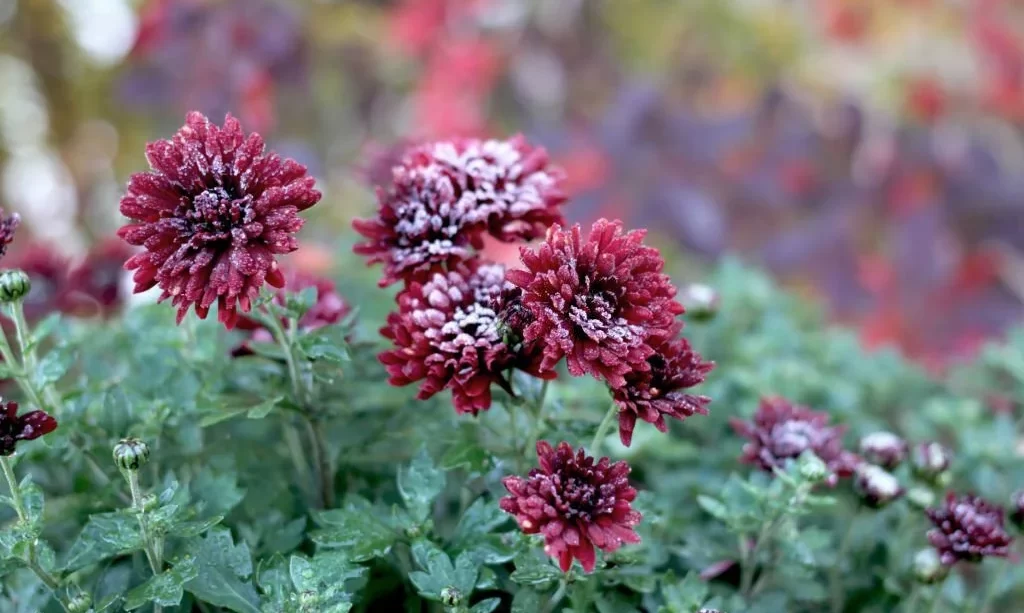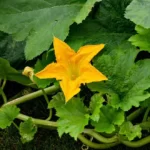Chrysanthemums, affectionately known as mums, have earned a special place in the hearts of gardeners and flower enthusiasts around the world. These vibrant and versatile flowers are celebrated for their stunning array of colors and their remarkable ability to grace gardens with their beauty, particularly during the crisp and colorful days of autumn. However, lurking beneath the allure of mums is a question that often crosses the minds of those who adore them: Can mums withstand the chill of frost? In this exploration, we unravel the story of chrysanthemums and their resilient response to cold temperatures, shedding light on their reputation as autumn’s enduring stars.
- FALL COLOR: Beautiful hardy mum that are sure to brighten up your Fall garden!
- GROWTH: Mums grow up to about 24″ tall with a spread of up to 24″.
- CARE: Chrysanthemums will bloom best in full sun. They thrive in well-draining soil and require even, consistent moisture.
- FUN FACT: Mums colors can symbolize different meanings, such as love, sorrow, well wishes, etc., making them a great gift for different occasions!
- LIVE PLANTS: Our plants are grown exclusively for Deep Roots and The Three Company, shipped fresh directly from our greenhouse to you!
The Hardy Nature of Chrysanthemums
Chrysanthemums, or mums for short, are renowned for their hardiness in the face of changing seasons. These flowering plants have earned their status as dependable and adaptable perennials in numerous regions. They exhibit a unique ability to thrive when the days grow shorter, and the temperatures begin to dip, making them a beloved emblem of autumn.
What sets mums apart is their robustness in the face of cooler temperatures. While many plants wither and retreat as the summer warmth wanes, mums rise to the occasion. They proudly showcase their colorful blooms just as other flowers begin to fade, earning them the moniker “fall mums”.
Mums are known for their capacity to endure the chill of early autumn and, in some cases, even withstand light frosts. This resilience makes them a favored choice for gardeners seeking to extend the season’s floral display well into the colder months. Their hardy nature not only adds a touch of elegance to autumn landscapes but also offers garden enthusiasts a reliable source of color as the year progresses.
The Effects of Frost on Mums
While chrysanthemums are renowned for their hardiness, they are not entirely impervious to the effects of frost. When exposed to frosty conditions, mums can experience several adverse effects on their appearance and overall health.
Frost damage often manifests as wilting and browning of the delicate petals and leaves of the mum. The plant’s tissues may become damaged due to the formation of ice crystals, which rupture cell walls and lead to cellular damage. This damage can result in a withered and unsightly appearance.
In severe cases, extended exposure to frost can prove fatal to mums. Prolonged freezing temperatures can lead to irreparable harm, causing the plant to succumb to the cold. Gardeners who neglect to take precautions in the face of impending frost may find themselves mourning the loss of their cherished mums.
It’s important to note that the severity of frost damage can vary depending on a range of factors, including the intensity and duration of the frost, the mum’s stage of growth, and the specific mum variety. As such, protecting mums from frost becomes a crucial consideration for those who wish to enjoy their autumnal beauty.
Protecting Mums from Frost
To shield mums from the adverse effects of frost and prolong their vibrant display, gardeners can employ several protective measures:
- Frost Cloth or Blankets: Covering mums with frost cloth, old blankets, or similar materials on cold nights can provide a protective barrier against freezing temperatures. These covers trap heat close to the plant, preventing frost damage.
- Proper Watering: Ensure mums are adequately watered, as hydrated plants are more resilient to cold. However, avoid overwatering, as waterlogged soil can exacerbate frost damage.
- Mulching: Apply a layer of mulch around the base of the mum plants to insulate the soil and protect the roots. This helps maintain a more stable temperature in the root zone.
- Selecting Frost-Resistant Varieties: Consider planting mum varieties that are more tolerant of cold temperatures. Some mum cultivars are specifically bred for their ability to withstand frost.
- Container Gardening: If you have potted mums, bring them indoors during frosty nights or place them in a sheltered area to protect them from freezing conditions.
By implementing these protective strategies, gardeners can safeguard their beloved chrysanthemums from the potential harm of frost, ensuring that these autumn treasures continue to bloom and thrive, even as the temperatures drop.
- [Ideal Size] Each plastic plant cover measures 23.6″ x 31.5″ and is suitable for various small plants indoors or outdoors, such as small shrubs, bushes and potted plants. 6 pieces come in a set, which can meet the needs of most small potted plants and shrubs.
- [High-quality PE Film] These cold protection covers are composed of PE greenhouse film. Compared with the common non-woven made or PVC-made products on the market, our products are durable and waterproof, with excellent light transmission and heat insulation.
- [All-round Protection] While our plant protective covers provide sun and rain protection, their good light transmission ensures that the plants absorb enough sunlight. They insulate the plants in winter, equivalent to small greenhouses. They also effectively protect plants from poultry, birds, and insects.
- [More Uses] You can cover our plastic covers on daily necessities, such as furniture and clothes, to protect them from dust and moisture. They are also suitable as temporary and simple tarpaulins to keep out the wind and rain, or to prevent windows from freezing in winter.
- [Great Helpers] With features such as large size, ideal quantity, reliable quality, and multiple uses, our products are absolutely must-haves for those of you who love plants and you will have the ultimate gardening experience like never before.
Overwintering Mums
In regions with harsh winters or for gardeners who wish to enjoy their mums year after year, overwintering becomes a valuable practice. Overwintering involves preparing and protecting the chrysanthemums to ensure their survival through the cold months and their return in the following growing season.
One essential step in overwintering mums is cutting them back. This entails trimming the plants down to a few inches above the ground after their fall bloom has faded. This not only tidies up the appearance of the garden but also helps the plant conserve energy. Pruned mums are less susceptible to damage from heavy snow and ice.
Another key aspect of overwintering is providing adequate mulch around the base of the mums. Mulch acts as insulation, shielding the roots from extreme cold and temperature fluctuations. A layer of mulch applied in late fall helps to maintain stable soil temperatures, preventing the roots from freezing.
While some gardeners choose to leave their mums in the ground during winter, others prefer to lift the plants and transfer them to containers or store them in a sheltered location like an unheated garage. This practice is particularly common in areas with extremely cold winters, where the ground can freeze deeply.
By overwintering mums and carefully preparing them for the challenges of winter, gardeners can ensure the survival of these hardy perennials and anticipate their return with vibrant blooms in the spring, marking the start of a new growing season.
Conclusion
In conclusion, the question of whether frost kills mums is met with a nuanced response. Chrysanthemums, celebrated for their hardiness and vibrant autumnal displays, possess a notable resilience to cooler temperatures. They can often withstand light frosts, extending their blooming season well into the fall and even surviving mild winter conditions.
However, it is vital for gardeners to remain vigilant when frost is a possibility. Frost damage can lead to the withering and browning of mum petals and leaves, impacting the plant’s overall health. Protecting mums from frost with strategies like frost cloths, proper watering, mulching, and selecting frost-resistant varieties can help gardeners preserve their plants’ beauty and longevity.
For those seeking to enjoy their mums year after year, overwintering offers a practical solution. By cutting back the plants, applying mulch, and, in some cases, transplanting them to containers or sheltered locations, gardeners can ensure the survival and return of these cherished autumn companions.
In the end, mums continue to enchant us with their hardiness, beauty, and adaptability, earning their place as autumn’s enduring stars and beloved additions to gardens around the world.





